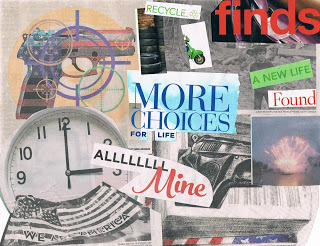Spring into Summer Roundup

https://cobblepublishing.com/thomas-webb/
http://www.thistlepublishing.co.uk/thetyre.html
Sci-Fi and Parables about Class Hierarchies May 2018
Castes of Characters
Stalemate (Clockwerk Thriller Book One) by Thomas Webb Cobble Publishing LLC May 2018 adult sci-fi & fantasy
Stalemate is a super fresh steampunk alternate history of the U.S. Civil War in the years 1863 to 1864. And wait—there’s so much more to this fast-paced reimagining of a nation divided. The opening scene quickly develops into an immersive chaotic battle reminiscent of Terminator. Brisk prose supports a narrative sprint that reinforces a sense of urgent mayhem in the challenging circumstances Union Colonel Julius Montclair, Princess Ayita, Scarlet, Copperhead, and company are overcoming.
In tone of unexpected artistic range, Stalematefollows in the tradition of Cherie Priest’s Clockwork Century series. There are clever nods to Yoda from Star Wars, Mr. Miyagi in The Karate Kid(Welcome, Cobra Kai!), a little Kung Fu with David Carradine, Walter Mosley’s Easy Rawlins mysteries, and even a bit of a “Deep Throat” vibe from Watergate infamy. Its tangible elements of emotional depth interwoven into the action sequences should also appeal to fans of Meljean Brook’s Iron Duke series.
Often the most engaging steampunk fiction blends the primitive tech of the past with modern sensibilities and integrates that mix into an organic social commentary about the evolution of human society, revealing that some things remain unchanged over generations. From superficial “it” factors in the marketing of political candidates as one character remarks on pages 41—42: “… A face simply made for a daguerreotype. With that jawline and that hair? He has ‘president’ written all over him.” to deeper, more complicated issues of the racial hierarchy of extended families in Louisiana’s Creole society, Stalemate is layered in provocative ideas.
The author conveys a clear and steady undertone of the racial strife at the core of the divide between the Union and the Confederacy without including the expected, explicit racial slur until beyond the halfway point in the story. Usage of incidental standard profanity is minimal almost to the point of nonexistence. Some passages are poetic in composition as in this phrase seemingly inspired by Emily Dickinson on page 184, “Like some hell-beast belching smoke and brimstone, the locomotive roared by.”
The ending of this first entry in the Clockwerk Thriller series lays a strong foundation for future intriguing installments.
Inclusion Roll Call: named indigenous people, interracial* people, all socioeconomic classes from subsistence to privileged elites, non-hetero people**, and people of all ages and body types*** *Actually interethnic since humans are all members of one species **Rendered in stereotypes reflective of an unconscious, hetero-centric hypermasculine bias ***A featured character who is obese is described in terms that reflect the unconscious bias of someone who is very physically fit and/or fat-phobic.
The Tyre by C. J. Dubois and E. C. Huntley Thistle Publishing 31 May 2018 multicultural literary fiction
Events in The Tyre occur mostly in spots along the road to the Indian (as in India, not indigenous North Americans who were misidentified by Columbus) state of Kerala between what seems to be the fictional city of Radapakkam (as a stand-in for the actual city of Kadappakkam?) and Puttur in the state of Karnataka. It’s a path that crosses multiple Indian states of geography, commerce, and social caste. This parable about a husband, wife, son, and daughter—Ranji, Meena, Santosh, and Surya—does the same.
The immediately obvious tale focuses on Ranji’s quandary about whether to accept the circumstances of his family’s circumstances as struggling untouchables or to strive for more without landing them all into a Notorious B.I.G. “Mo Money Mo Problems” situation as he’s warned against by an itinerant wise man. (Every parable requires at least one.) When a tire rolls off the back of a truck and lands practically at Ranji’s feet it seems like an answer to his prayers. Or is it? The possibilities spin Ranji into a whirl of brooding obsession only a little less intense than Gollum’s fixation on “my precious” in The Lord of the Rings.
More subtly, references to the story of Sita from the Hindu epic tale Ramayana about a desirable woman who accompanies her husband into exile tells a deeper story of the precariousness of safety and privilege for women in Indian society. That ancient literary nod is supported by a more current one to writer-director Madhur Bhandarkar’s 2007 film Traffic Signal about the trickle-down effects of economic oppression and entrenched caste systems that make upward mobility nearly impossible. Peacock symbolism associated with Lakshmi connects the navigation of Ranji’s and his family members’ separate and shared journeys to patience, kindness, and luck.
Told with compassion for and amusement by human foibles, this English translation of The Tyre (from French?) offers readers a charming tale about recognizing the value in the gifts of life’s present circumstances.
Published on June 26, 2018 13:51
No comments have been added yet.



